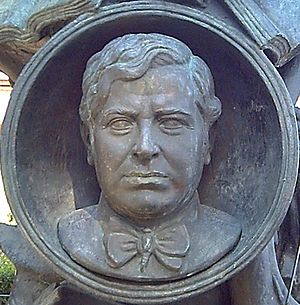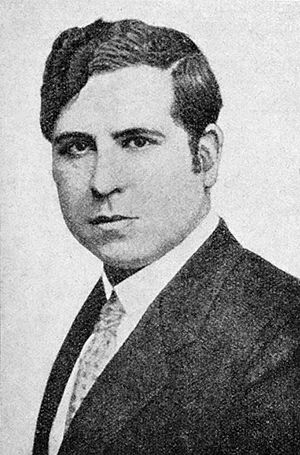Ramón Gómez de la Serna facts for kids
Ramón Gómez de la Serna y Puig (born July 3, 1888, in Madrid – died January 13, 1963, in Buenos Aires) was a Spanish writer and playwright. He was known for being an "avant-garde" artist, which means he liked to create new and unusual forms of art. He had a big influence on the famous filmmaker Luis Buñuel.
Ramón Gómez de la Serna is most famous for something called "Greguería". These are very short, clever sentences that are a bit like one-line jokes. They often give a new and funny way of looking at everyday things. Ramón wrote more than 90 books and plays in his life. In 1933, he moved to Buenos Aires, Argentina. He stayed there during the Spanish Civil War and the years that followed, and he died there.
About Ramón's Life
Ramón was born into a family that was quite well-off. Instead of becoming a lawyer like his father, he decided to be an artist and writer. He started writing for a magazine called Prometeo, which his father helped pay for between 1908 and 1912. In 1909, Ramón published an important article about "futurism" in the magazine, which he had translated into Spanish. Futurism was an art movement that focused on speed, technology, and the future.
During the First World War, Ramón became a leading figure in Spain for new and experimental writing. He started a famous literary meeting group, called a tertulia, in Madrid. This group was a very important part of the "banquet years" of art, a time when many new and exciting ideas were shared. Ramón developed a unique way of seeing the world, which greatly influenced younger poets in Spain.
He wrote many unique and enjoyable novels. One of his first important novels was La viuda blanca y negra (The Black and White Widow), written in 1921. This book was inspired by his relationship with Carmen de Burgos, an early writer who supported women's rights.
It was his "greguerías" that first caught the attention of a writer named Valery Larbaud. In the 1920s, Larbaud helped get Ramón's work translated into French.
In Spain, Ramón's work sometimes caused arguments, but he also had strong supporters like José Ortega y Gasset, a famous Spanish philosopher. Later, some people thought his work might have been praised too much.
Ramón moved to Buenos Aires when the Spanish Civil War began. This led to him being left out and forgotten by some people in Spain.
Even though he wrote some very original books during this time, like the novel El hombre perdido (The Lost Man) in 1947 and his autobiography Automoribundia (Automoribund) in 1948, his life in exile was often lonely and he became poorer. He had left behind important artworks, including a painting of his Pombo Tertulia group by Gutiérrez-Solana (now in the Reina Sofia Museum in Madrid) and a cubist portrait of him by Diego Rivera (which was lost during the war). Ramón died on January 13, 1963, from natural causes. He had accepted that his death was coming.
Despite his reputation fading for a while, two very famous writers admired him greatly. Octavio Paz, a Nobel Prize winner, wrote in 1967 that Ramón was "the great Spanish writer." Pablo Neruda, another Nobel Prize winner, said in 1971 that Ramón was "the major figure of surrealism" in any country.
His works have been collected and published in 20 volumes.
Ramón's Books
- El circo (The Circus)
Some of his works translated into English include:
- Aphorisms, translated by Miguel Gonzalez-Gerth (1989)
- Dalí, translated by Nicholas Fry (1979)
- Eight Novellas, translated by Herlinda Charpentier Saitz and Robert L. Saitz (2005)
- Greguerías: The Wit and Wisdom of Ramón Gómez de la Serna, translated by Philip Ward (1982)
- Movieland, translated by Angel Flores (1930)
- Some Greguerías, translated by Helen Granville-Barker (1944)
See also
 In Spanish: Ramón Gómez de la Serna para niños
In Spanish: Ramón Gómez de la Serna para niños




